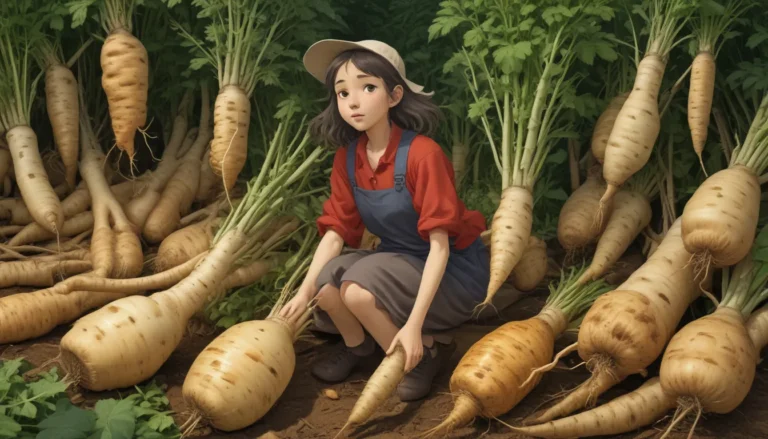Mastering the Art of Harvesting Leeks

Leeks, a member of the Amaryllidaceae family closely related to onions, are a delicious and versatile vegetable that can elevate any dish. If you want to ensure a successful harvest of these flavorful vegetables, it’s essential to follow some key tips and guidelines throughout their growth cycle. In this comprehensive guide, we will delve into 7 essential tips for harvesting your best leek crop ever.
Understanding Leeks
Before we jump into harvesting tips, let’s take a moment to appreciate the unique characteristics of leeks. Known as a “long onion,” these vegetables feature densely packed cylindrical leaves at the base that fan out at the top, offering a succulent and oniony flavor.
Benefits of Leeks:
- Delicious flavor
- Versatile in various dishes
- Rich in essential nutrients
Now, let’s explore the essential tips for ensuring a bountiful leek harvest.
Top Tips for Harvesting Leeks
1. Timely Planting Is Essential
To achieve a successful leek harvest, timely planting is crucial. Leeks, although biennials, are typically grown as annuals. Depending on the variety, the days to maturity can range from 50 to 150 days.
In cooler regions, consider starting seeds indoors 10 weeks before the last spring frost. Early varieties can be grown before the summer heat sets in, while late varieties can mature before the first frost. Opt for frost-tolerant cultivars for added resilience.
In warmer areas, direct sow late-season varieties 10 weeks before the first fall frost for an early spring harvest, and again in spring for a fall crop. Proper planting timelines will help you cultivate flavorful and mature leeks.
2. Blanching Improves Flavor
Blanching is a technique that enhances the flavor of leeks by shielding the developing stalk from the sun. This can be achieved through hilling or trenching methods.
Hilling: Involves mounding up soil around the base of leek cylinders as they mature.
Trenching: Entails sowing seeds or seedlings in a deep furrow between two ridges of soil. Soil is gradually added to shield the developing cylinders from direct sunlight.
The longer the white portion of the leek cylinder at harvest, the more flavorful the vegetable becomes. Embracing blanching techniques can result in tastier leeks for your culinary creations.
3. Embracing Weather Variability
Light frost can actually benefit your leek crop, especially in northern regions where frost-tolerant cultivars thrive. If frost is looming, mound up extra soil around your leeks and add a layer of mulch. A light frost enhances the oniony flavor of your homegrown leeks.
For tender varieties, consider using floating row covers for protection. If unexpected freezing temperatures are forecasted, harvest leeks early and store them in a cool place to preserve freshness.
4. Size Matters
While we often associate larger vegetables with better quality, this doesn’t always hold true for leeks. The average mature leek typically measures around one inch in diameter. Avoid allowing leeks to reach mammoth proportions, as this can result in a pithy core and bitter flavor.
Refer to the recommended size for the cultivars you’re growing and harvest accordingly. Opting for appropriately sized leeks ensures a pleasant culinary experience.
5. Gentle Harvesting Techniques
When it comes to harvesting leeks, using a shovel or pitchfork to gently lift each plant from the ground is preferential to pulling them out. This method preserves the root system, allowing the leeks to remain fresh for longer post-harvest.
Remember to remove excess dirt before storage, and only wash your leeks just before using them to extend their shelf life. By handling your leeks with care during harvest, you can ensure optimal freshness and quality.
6. The Importance of Foliage
Leek leaves, also known as flags, play a crucial role in nourishing the vegetable. It is advisable to leave the foliage untouched until the plants are ready for harvest. At that point, trim the leaves to maintain around four to six inches of dark foliage above the green/white cylinder.
Unlike onions, leeks do not wilt when fully mature. Look for lush green foliage and firm white and light green stalks as indicators of readiness. The foliage provides valuable insights into your leek variety and overall plant health.
7. Preventing Bolting
As a biennial plant, leeks complete their growth cycle over two years, with seed production occurring in the second year. To prevent premature bolting, keep an eye on temperature fluctuations that can trigger this phenomenon.
Early varieties generally complete their growth cycle in one season, while longer maturing cultivars may overwinter for harvest the following year. Be proactive in monitoring weather changes to avoid bolting, which can result in a bitter taste.
Cultivating a Lush Leek Harvest
By incorporating these 7 tips into your leek harvesting routine, you can elevate the quality and flavor of your homegrown crop. Planning your planting schedule, implementing blanching techniques, leveraging weather conditions, and adopting gentle harvesting methods are all essential practices.
With a little knowledge and care, you can enjoy a bountiful leek harvest that impresses both yourself and your neighbors. Share your favorite leek recipes and harvesting tips in the comments below – we love hearing from fellow gardeners!
For more culinary inspiration, check out our sister site, Foodal, for delicious recipes featuring leeks and other garden-fresh ingredients.
Continue your exploration of the allium family with these recommended reads:
– How to Grow Chives in Containers
– How to Plant and Grow Garlic in Your Veggie Patch
– How to Grow and Harvest Bunching Onions
Equip yourself with the knowledge and skills needed to cultivate leeks and other alliums successfully. Your garden bounty will thank you!





